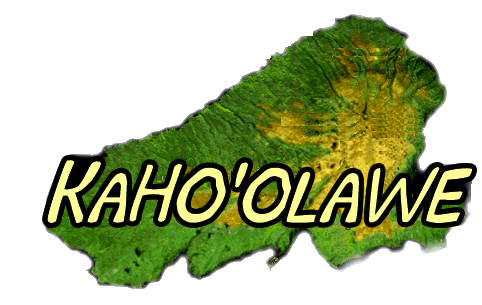
Home
Introduction to Kaho'olawe
PowerPoint
Introduction
Kaho'olawe Surveyor Software
Development Team
Role Cards
Key Elements for Reinhabiting
the Island
Presentation
Assessment
Related readings:
|
WATER WATER Rainfall is the major source for freshwater on Kaho`olowe. Annual rainfall on Kaho`olowe averages between less than 10 inches on its western coast near Hanakanaia Bay, and upwards of 25 inches at its summit at Pu`u Moaulanui. Because Kaho`olowe is located on the leeside of Maui and has a maximum elevation of only 1,477 feet, rainfall is generally restricted to large bursts of rain which usually hit the island during periods of kona (southerly) winds. Kona winds produce storms that can cause 2-4 inches of rain in a 24 hour period. These storms are responsible for most of the island's current erosion problems. During the ranch era, efforts were made to capture rainfall in cisterns constructed at Apuhu and Waikahalulu Gulches; reservoirs which were actually the craters of two pu`u [hills] at Kealealuna and Kealialalo. In spite of these efforts to "harvest" rainfall, on occasion water for cattle still had to be brought from Maui.(KICCR, 71) Water Resources: Like all Hawaiian Islands, Kaho`olowe seems to have a fresh water lens; a layer of fresh water "floating" on top of dense sea water. Hawaiian legends and accounts by 19th century visitors to Kaho`olowe identify springs and wells on the island. Around the turn of the century, however, kiawe (mesquite) was introduced onto the island as a source of cattle feed. With its introduction, existing wells and springs dried up as the trees' roots found their way into the water sources. (KICCR, 71) Water Resource Development: Kaho`olowe's water supply comes from two major sources--rainfall and ground water. A third potential source is the surrounding ocean. The most available source of water on the island is rainfall. Historically, rainfall has provided the bulk of water needed for the island and continues to offer the greatest potential for development. The cisterns need to be developed. One suggestion is that the island's road system be improved to act as a catchment for rainfall harvesting. Water from these sources could be readily available for soil abatement projects involving reforestation and revegetation efforts. Although ground water exists, it's sustainable yield and quality are uncertain and will not be known until a test well is completed. Water from such sources would be used only to meet human needs and only when no other water resource is available. A final source of water would be desalinization of ocean water. The U.S. Navy is currently planning a small facility in Hanakanaia. This facility could be expanded, or perhaps, an additional small facility could be constructed at one of the other proposed points of access to and from the island. (KICCR, 79) KICCR: Kaho`olawe: Restoring a Cultural Treasure. Final Report of the Kaho`olawe Island Conveyance Commission to the Congress of the United States. March 31,1993. |
